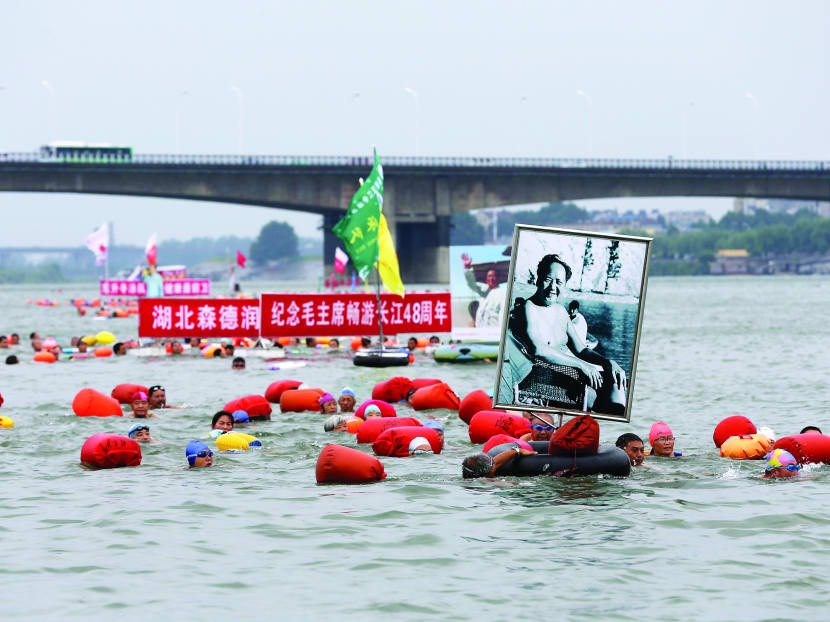Chinese tourists flock to sites that deify Mao
Wuxiang (CHINA) — Fancy getting shot at by a mock-Red Army guerrilla, sleeping on a brick bed and eating C-rations of millet porridge? Or having a happy snap with a Mao Zedong lookalike outside the mountain cave from which he fought the Communist Revolution?

Hundreds took part in a river-swimming event earlier this month to celebrate the anniversary of Mao swimming in the Yangtze River on July 16, 1966, local media reported. PHOTO: REUTERS
Wuxiang (CHINA) — Fancy getting shot at by a mock-Red Army guerrilla, sleeping on a brick bed and eating C-rations of millet porridge? Or having a happy snap with a Mao Zedong lookalike outside the mountain cave from which he fought the Communist Revolution?
China’s newly affluent tourists do. They are increasingly choosing to visit sites that deify Mao or glorify the Chinese Communist Party, a trend heartily welcomed by government officials struggling to clean up the party’s image for corruption and reignite revolutionary values that have fallen by the wayside on the path to prosperity.
In the past decade, China has invested 9 billion yuan (S$1.81 billion) to develop sites of famous battles in both the war between Communists and Nationalists, and the wartime struggle with Japan in what has come to be known as “red tourism”. The latter is coming in handy to ratchet up public opinion against its eastern neighbour in the current territorial dispute over a group of islands in the East China Sea.
Visitors to the mock battlefields and cave dwellings of Yan’an, celebrated as the birthplace of the Communist Revolution, rose 30 per cent, to nearly 30 million last year. Overall, red tourism visits nationally increased to 786 million last year from 670 million the previous year, rising at nearly twice the pace of the entire domestic tourism market.
Red tourism is gaining popularity in part because the packages are often cheaper than other holidays. But Mr Liu Xiao, of the Tourism Institute of Beijing Union University, said there is another reason, too.
“When people are no longer worried about food and safety, they begin to look for something that can satisfy their spiritual needs,” he said. “Tourists visit these revolutionary sites because they want to find out what inspired the older generation to overcome so many difficulties even in the toughest times.”
The number of people visiting the sites is rising despite the fact that government officials have largely been banned from making junkets there, as part of President Xi Jinping’s anti-extravagance campaign. But young, independent travellers have more than made up for the decline in the number of government officials.
Mr Dai Bin, president of the China Tourism Academy, an official think tank for the China National Tourism Administration, said two-thirds of visitors to red tourism sites are now aged under 35, compared with a majority of middle-aged visitors before.
Government officials are delighted to have a captive audience of new young people coming to “red” sites because it gives them a chance to demonstrate the party’s legitimacy at a time of growing public dissatisfaction with everyday concerns such as air pollution, food quality problems and healthcare shortages. They said young people have lost touch with the revolutionary values that made China great. Living like a Red Army guerrilla for a day can help rectify that.
“Only by understanding history correctly can they hold the right views on the party and on Sino-Japanese relations”, he said. Sites that commemorate China’s wartime struggle with Japan have been catapulted into the top 10 of popular tourist sites for the first time, as relations between the two countries have soured over the past two years. FINANCIAL TIMES





